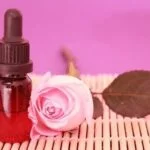Are you curious about how to make your own aromatherapy diffuser? Aromatherapy has been used for centuries as a natural way to promote relaxation, improve mood, and support overall well-being.
An aromatherapy diffuser is a tool that disperses essential oils into the air, allowing you to enjoy the therapeutic benefits of these oils in your home or workspace. In this article, we will explore the benefits of using an aromatherapy diffuser and provide a step-by-step guide on how to create your very own personalized diffuser.
Using essential oils in aromatherapy can have a range of health benefits, including reducing stress, improving sleep quality, and boosting mental clarity. Different essential oils have unique properties that can address specific concerns such as anxiety, fatigue, or congestion. Understanding the effects and benefits of various essential oils will help you tailor your homemade diffuser to meet your individual needs.
When it comes to creating your own aromatherapy diffuser, choosing the right base material is crucial. There are various options available, each with its own advantages and considerations. Whether you prefer a porous material like clay or a decorative option like glass or ceramic, we’ll discuss the factors to consider when selecting the perfect base for your homemade diffuser in this article.
Understanding Essential Oils
When it comes to aromatherapy, essential oils are the key ingredients that provide various benefits and effects. Each essential oil has its own unique properties, allowing users to address different physical and emotional issues. For example, lavender is known for its calming and relaxing effects, making it a popular choice for stress relief and improving sleep quality. On the other hand, peppermint oil is often used to boost energy and improve focus.
It is important to understand that essential oils can be used individually or combined to create powerful blends that offer multiple benefits. For instance, combining eucalyptus and tea tree oil can create a refreshing and cleansing blend that is great for respiratory support. By understanding the benefits and effects of different essential oils, individuals can tailor their aromatherapy experience to suit their specific needs.
In addition to their therapeutic properties, essential oils also have antimicrobial, antifungal, and antiviral properties. This makes them a natural choice for cleaning the air in your home while also providing pleasant scents. However, it is crucial to use essential oils safely, as they are highly concentrated substances that should be diluted before use in a diffuser.
| Essential Oil | Benefits/Effects |
|---|---|
| Lavender | Calming, Relaxing |
| Peppermint | Energizing, Improved Focus |
| Eucalyptus & Tea Tree | Respiratory Support |
Choosing the Right Base
When it comes to making your own aromatherapy diffuser, choosing the right base is crucial. The base of your diffuser will determine the overall look and functionality of the final product. There are a variety of materials that can be used as a base for your homemade diffuser, each with its own unique benefits.
Clay or Ceramic
Clay or ceramic bases are popular choices for homemade diffusers due to their porous nature, which allows the essential oils to slowly evaporate and fill the air with therapeutic aromas. These materials also add a decorative touch to your diffuser, making it a visually appealing addition to any room.
Wood
Wooden bases are another option for creating a DIY aromatherapy diffuser. Wood has natural absorbent properties, allowing it to effectively diffuse essential oils into the air. Additionally, wooden bases can be easily customized and crafted into various shapes and sizes to fit your personal style and preference.
Glass
Glass bases are an elegant choice for homemade diffusers. They are non-porous, making them easy to clean and maintain. Glass also provides a modern and sleek look to your diffuser, perfect for those who prefer a minimalist aesthetic.
Ultimately, the material you choose for your diffuser base will depend on both practical and aesthetic considerations. Consider how each material aligns with your personal preferences, decor style, and functional needs when selecting the right base for your DIY aromatherapy diffuser.
Designing Your Diffuser
Creating your own personalized aromatherapy diffuser can be a fun and rewarding DIY project. To start, you’ll need to gather all the necessary materials. The first step is choosing the right base for your diffuser.
You can explore different options such as ceramic, wood, or glass containers to hold the essential oils. Each material has its unique properties and aesthetics, so you can choose one that best fits your personal style and the overall ambiance of the space where you’ll be using the diffuser.
Once you have chosen your base, it’s time to design your diffuser. You can get creative with this step by customizing the appearance of your diffuser with paint, stickers, or other decorative elements. This will not only make your diffuser visually appealing but also add a personal touch to it.
After designing the exterior, you can move on to creating the internal structure of the diffuser. Depending on the type of diffuser you want (reed sticks, electric, or candle), you will need to assemble the necessary components accordingly.
To complete your personalized aromatherapy diffuser, don’t forget to select an essential oil blend that resonates with you. There are numerous recipes available for different purposes such as relaxation, focus, or energy boost. Experiment with different combinations and find one that aligns with your needs and preferences.
Safety Precautions
When using essential oils for aromatherapy, it is important to take certain safety precautions to avoid potential hazards and ensure a positive experience. Here are some tips on using essential oils safely:
- Do a patch test: Before using any new essential oil, it is recommended to do a patch test on a small area of your skin to check for any allergic reactions.
- Dilute properly: Essential oils are highly concentrated and should be diluted with a carrier oil before applying to the skin or using in a diffuser. Follow recommended dilution ratios to avoid skin irritation.
- Avoid ingestion: While some essential oils can be ingested in very small amounts under the guidance of a certified aromatherapist, it is generally safer to use them topically or through inhalation.
- Keep out of reach of children and pets: Essential oils can be toxic if ingested, so it is important to store them in a safe place away from children and pets.
In addition to these tips, there are certain hazards to be aware of when using essential oils. For example, citrus oils can cause photosensitivity and should not be applied to the skin before sun exposure. Some essential oils may also interact with certain medications or medical conditions, so it is important to consult with a healthcare professional before using them.
By following these safety precautions and being aware of potential hazards, you can enjoy the numerous benefits of aromatherapy without putting your health at risk. Remember that essential oils are powerful substances and should be used with caution and respect.
Maintenance and Cleaning
Maintaining and cleaning your homemade aromatherapy diffuser is essential to ensure its longevity and effectiveness. Proper care will not only keep your diffuser in good condition but also prevent any potential hazards from using essential oils. Here are some tips on how to maintain and clean your homemade diffuser:
Regular Cleaning
It’s important to regularly clean your aromatherapy diffuser to prevent the build-up of essential oils and residue. Start by unplugging the diffuser and emptying any remaining water and essential oil from the reservoir. Use a soft, damp cloth to wipe down the interior and exterior of the diffuser, removing any oil or debris. Pay special attention to the ultrasonic plate and the mist outlet, as they can accumulate build-up over time.
Deep Cleaning
To deep clean your aromatherapy diffuser, you can use a natural cleaning solution made with equal parts water and vinegar. Fill the reservoir halfway with this solution and let it sit for an hour. Afterward, empty the reservoir and use a cotton swab dipped in the cleaning solution to gently scrub any hard-to-reach areas. Rinse thoroughly with water to remove any vinegar residue before using the diffuser again.
Maintenance Tips
In addition to regular cleaning, there are some maintenance tips that can help prolong the life of your homemade aromatherapy diffuser. Avoid using harsh cleaning chemicals or abrasive materials that could damage the surface of the diffuser. It’s also important to follow the manufacturer’s instructions for recommended essential oil usage and dilution ratios to prevent clogging or damaging the internal components of the diffuser.
By following these maintenance and cleaning tips, you can ensure that your homemade aromatherapy diffuser remains in optimal condition, providing you with long-lasting benefits for your well-being. Regular upkeep not only keeps your diffuser functioning effectively but also contributes to a safe and enjoyable aromatherapy experience.
DIY Diffuser Recipes
Creating your own aromatherapy diffuser allows you to customize the scents and blends to suit your personal preferences and needs. Here are some creative and aromatic blend recipes that you can use with your homemade diffuser:
- Lavender Dreams: A relaxing and calming blend that helps reduce stress and promote better sleep.
- Citrus Burst: An energizing blend that uplifts the mood and increases focus and concentration.
- Spice Delight: A warm and comforting blend that creates a cozy atmosphere, perfect for cold winter days.
- Floral Harmony: A delicate floral blend that brings a sense of tranquility and relaxation to any space.
Experimenting with different essential oil combinations can help you find the perfect scents to enhance your well-being and create the desired atmosphere in your home.
Remember to always use high-quality, pure essential oils when making these blends to ensure safety and effectiveness. Additionally, it’s important to consider any potential allergies or sensitivities when choosing which oils to use in your diffuser blends.
With these DIY diffuser recipes, you can explore the endless possibilities of aromatherapy and create unique blends that cater to your specific needs and preferences. Enjoy the therapeutic benefits of aromatherapy by incorporating these delightful scents into your daily routine through your own handmade diffuser.
Personalizing Your Experience
In conclusion, creating your own aromatherapy diffuser is not only a fun and creative process but also allows you to customize your experience based on your preferences and needs. By understanding the different benefits and effects of essential oils, choosing the right base materials, and following the step-by-step guide for designing your diffuser, you can create a personalized tool for relaxation, stress relief, and overall well-being.
Furthermore, being aware of safety precautions and proper maintenance and cleaning will ensure that your homemade diffuser remains effective and safe to use. It’s important to remember that essential oils are potent substances and should be used with caution. By following the recommended guidelines for blending oils and using them in your diffuser, you can enjoy the benefits of aromatherapy without any potential hazards.
Lastly, experimenting with DIY diffuser recipes and personalizing your experience with different blends will allow you to tailor your aromatherapy practice to suit your mood or specific needs at any given time. Whether it’s creating an energizing blend for the morning or a calming blend for bedtime, having a personalized aromatherapy diffuser gives you the flexibility to curate scents that resonate with you personally.
With these tips in mind, you can embark on a journey of self-care and mindfulness through the art of aromatherapy with your homemade diffuser.
Frequently Asked Questions
How Do You Make a Homemade Aroma Diffuser?
A homemade aroma diffuser can be made using simple materials like a glass or ceramic container, reed sticks, and a carrier oil. To make one, fill the container with the carrier oil and add a few drops of essential oil for fragrance.
Then, insert the reed sticks into the mixture, allowing them to absorb the oils and diffuse the scent into the surrounding air.
What Ingredients Do You Need to Make Diffusers?
To make diffusers at home, you will need a few key ingredients. These include a carrier oil such as sweet almond oil or safflower oil, essential oils for fragrance (like lavender, eucalyptus, or lemon), reed sticks or bamboo skewers, and a glass or ceramic container to hold the mixture.
It’s important to use high-quality essential oils for best results.
What Is the Best Oil for Homemade Diffuser?
The best oil for homemade diffusers is largely dependent on personal preference and desired effects. Some popular choices for essential oils in diffusers include lavender for relaxation, eucalyptus for respiratory support, and citrus oils like lemon or orange for an uplifting atmosphere.
It’s important to choose high-quality oils that are safe for diffusion and suitable for the intended purpose of the homemade diffuser.

Are you looking for a natural way to improve your health and wellbeing?
If so, aromatherapy may be the answer for you.





